September 2025 marks 200 years since the first modern passenger train on the Stockton & Darlington Railway opened, on 27 September 1825. In celebration of this, for this month’s article we will be looking back at how the advancements in transport have affected the Inn and influenced the lives of Middle Templars.
Prior to the founding of the Inn, the land was held by the Knights Templars who established the area as their English headquarters. The organisation itself was well renowned for its development of efficient and practical travel across Europe to the Holy Lands through the use of horses, wagons and an extensive fleet of ships.
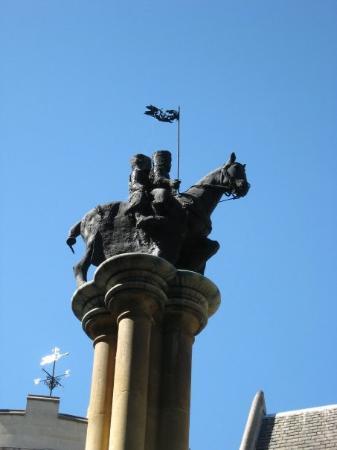
Statue outside of Temple Church of two Knights Templar on a horse.
During their time at the Temple, the Knights Templar built a landing stage for access to and from the Thames, with boats on the river providing an efficient way to travel and trade. This construction was also of benefit to the lawyers who moved into the land once it had been vacated by the Knights Templar, using the Temple Pier to stay connected and gain access to the City of London or Westminster via boat. This was of particular use prior to the opening of the Royal Courts of Justice 1882, most courts were situated down the river in Westminster Hall. While the Inn still retains river access via the Temple Landing Stage on the other side of the Embankment Road, these rights are now rarely exercised.
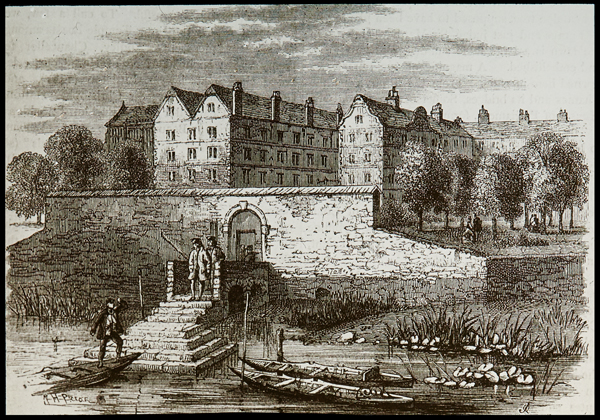
View of the Temple Stairs from the river, 1680. [MT/19/SLI/47]
Transport on land was also used by members to quicken their travels – mainly, throughout historically, via the use of horse and carriage. It was noted in the 1631 Minutes of Parliament that a Porter was to attend the Temple Gates in order to allow access for the carriages in an orderly fashion. Later in 1783, with the increased use of carriages, the Inn proposed to create a more “commodious place for the carriages to stop” when on the Middle Temple Lane. However, complaints were made by members regarding the closing of access to the lane between 11pm and 6am to carriages. One Mr. Evans wrote to the Inn in 1855 complaining about this ‘ancient’ ruling, stating that he had to leave a cab in the rain and make his way to Chambers with luggage one night. He noted that this particularly affected members returning from Circuit and asked for the revoking of this order. The Inn passed a ruling that future decisions on the opening and closing times of the Gates would be left to the Treasurer.
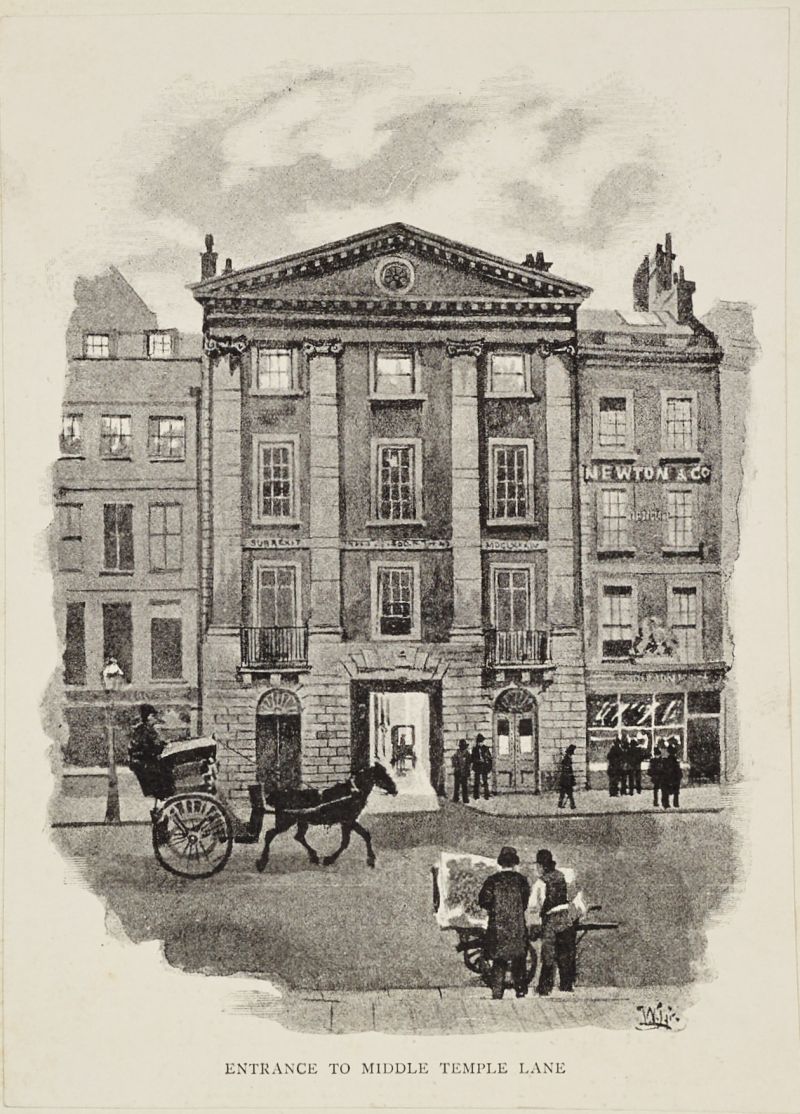
Horse and Carriage in front of the entrance to Middle Temple Lane, 1890. [MT/19/ILL/E/E12/7]
As developments in transport progressed, the Lane began to see heavier and more frequent use, requiring a stronger ground surface to cope with this extra load. On 3 April 1795, the Inn received an estimate for the costings of paving works on Middle Temple Lane which would involve relaying the carriage paving and laying the pebbles down making it more ‘convenient and safe for the horses going down them’, totalling £164 – about £17,000 in today’s money. Later, on 22 December 1789, the Inn received a paviour and mason’s estimate bill for the proposed work in widening the carriage ways in Fountain Court and Brick Court which involved breaking in on the existing footways to make way for the increased road traffic through the Inn.
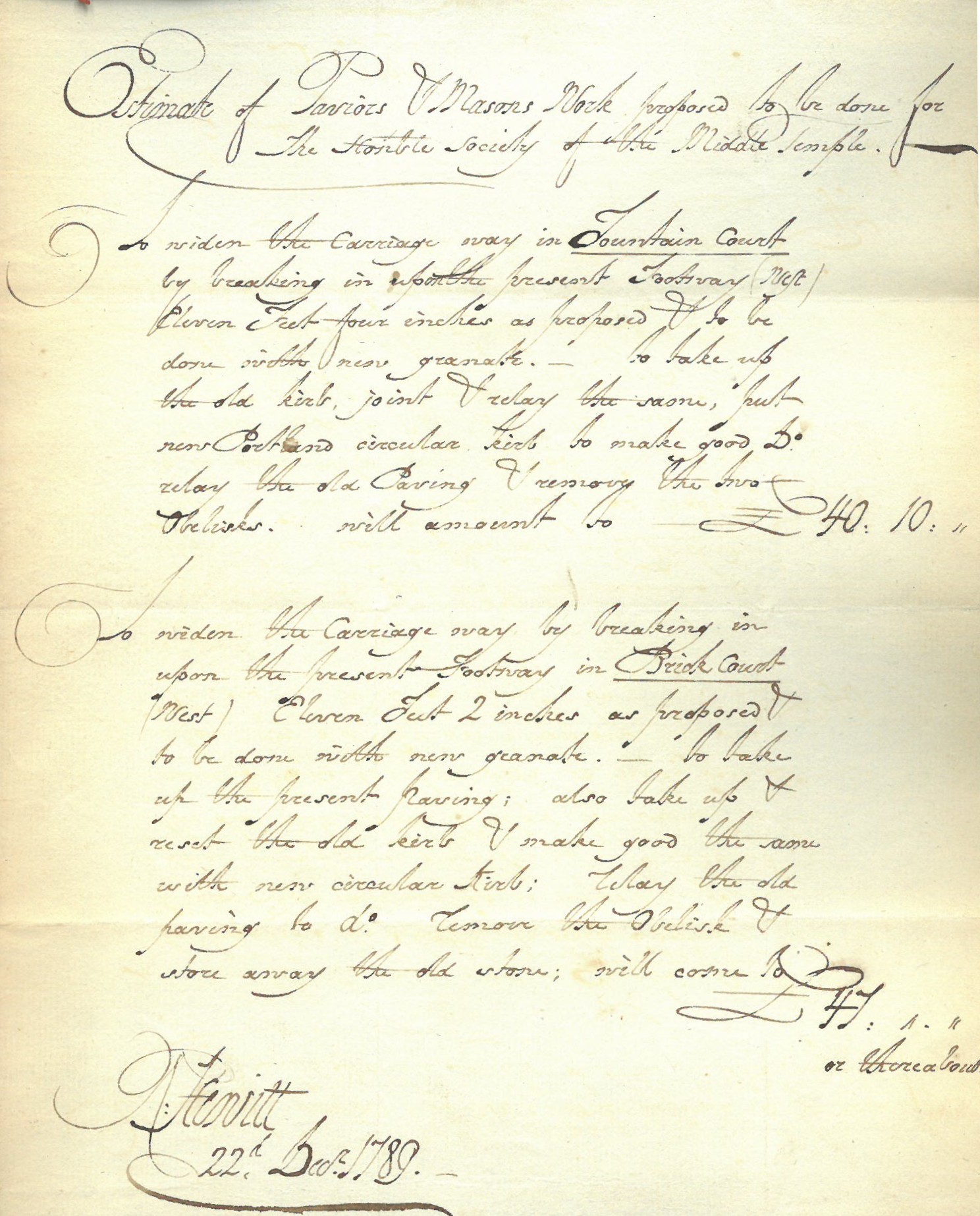
Estimated cost of widening Fountain Court and Brick Court Carriageways, 1789. [MT/6/RBW/151]
The works to build the Victoria Embankment in the 1860s included a new underground railway, the Metropolitan District Railway. This would be accessible to the Inn through the creation of Temple Tube Station; however, this proposal was not initially welcomed by the Benchers who were worried about the noise, smell and vibrations created by the underground steam railway. After many negotiations, Middle and Inner Temple came to an agreement that the railway was allowed on Temple Grounds but only in a tunnel or covered way and there were many conditions laid down about the manner of its construction. One other point on which the Railway company later offered appeasement to the Inns was the regulation that drivers were not allowed to blow their whistles near Temple Station, so as not to disturb the nearby lawyers.
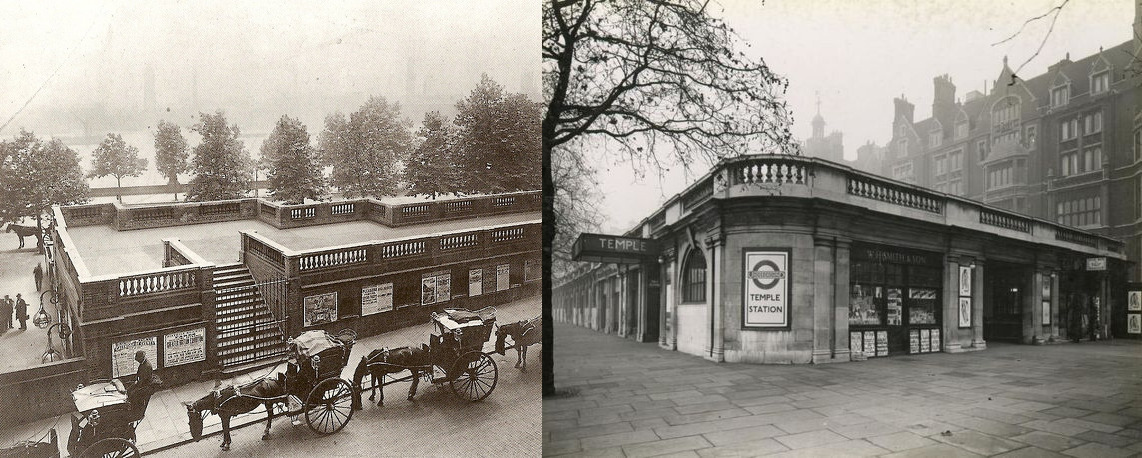
Temple Tube Station in 1899 and 1936.
The Inn has more recently benefited from the use of temporary railway/tramlines in the Inn itself, erected to assist with building work. During the Second World War, in 1941, a temporary railway line was installed to remove rubble from buildings which had fallen prey to the Blitz. Later, in 1952, during the rebuilding of the cloisters, tramlines were temporarily erected to remove debris and bring in materials.
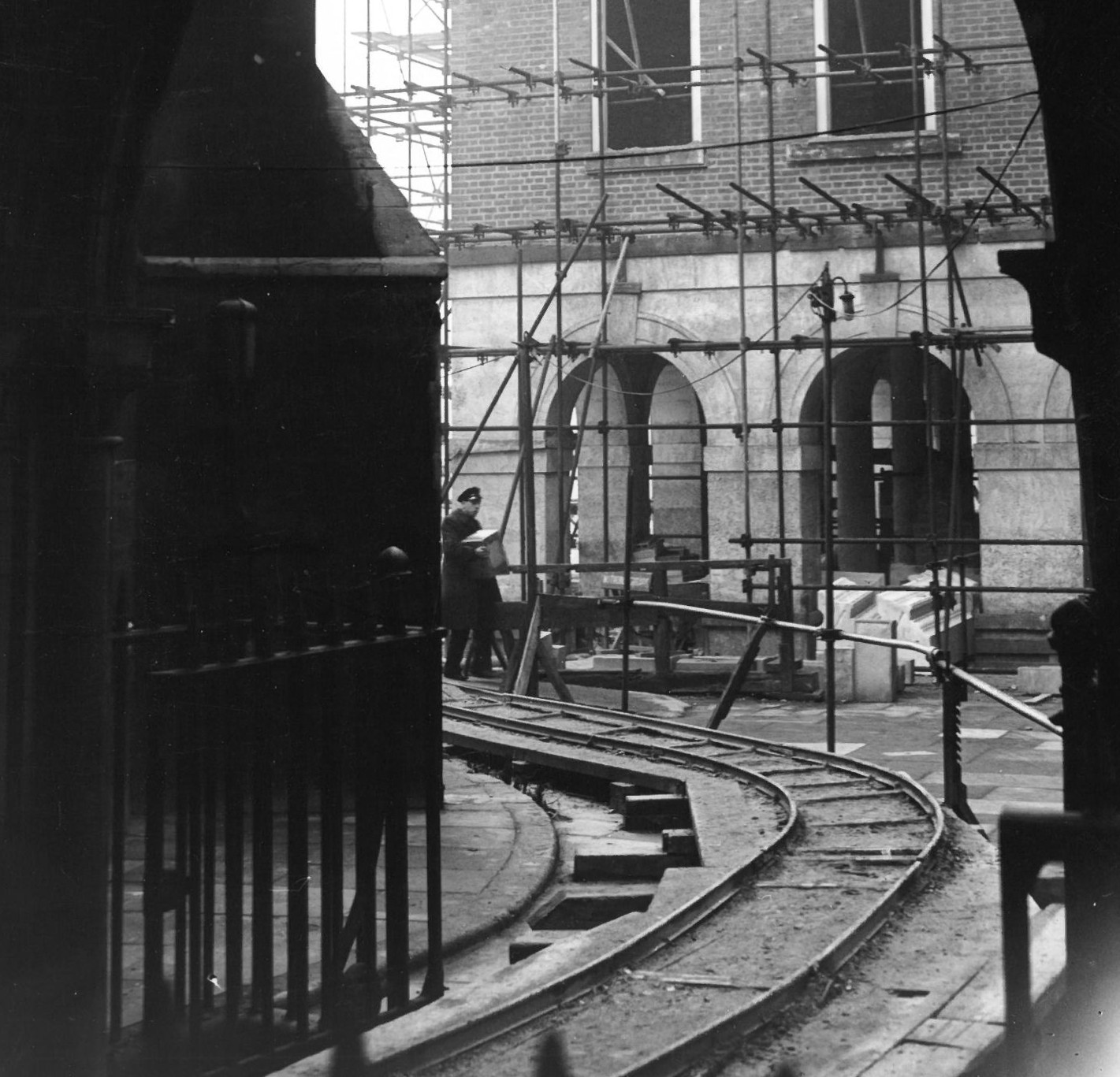
Temporary track built at the Inn to remove rubble, 1952. [MT/19/PHO/10/1/24]
From 1825 onwards, railway travel for passengers was being introduced across the UK, allowing Middle Templars to travel large distances in relatively short times, making it easier for them to attend events and dinners at the Inn. However, despite this convenience, members faced the problem of delayed trains - an issue which still prevails today.
For many years, a key part of qualifying for the Bar was ‘keeping term’ by dining in Hall a set number of times. An example of how railway difficulties could disrupt things for members appears in 1849 when a Leonard Worsley petitioned to the Inn to be allowed to keep his term after a delayed train from Taunton resulted in him missing his dinner. The superintendent of Great Western Railways wrote a note alongside his petition to confirm this was the case. Likewise, in 1846, Thomas Edward Clarke wrote asking to be allowed to keep the one day he missed because of delay on the train, again providing proof in the form of a certificate from the superintendent at Great Western Railway.
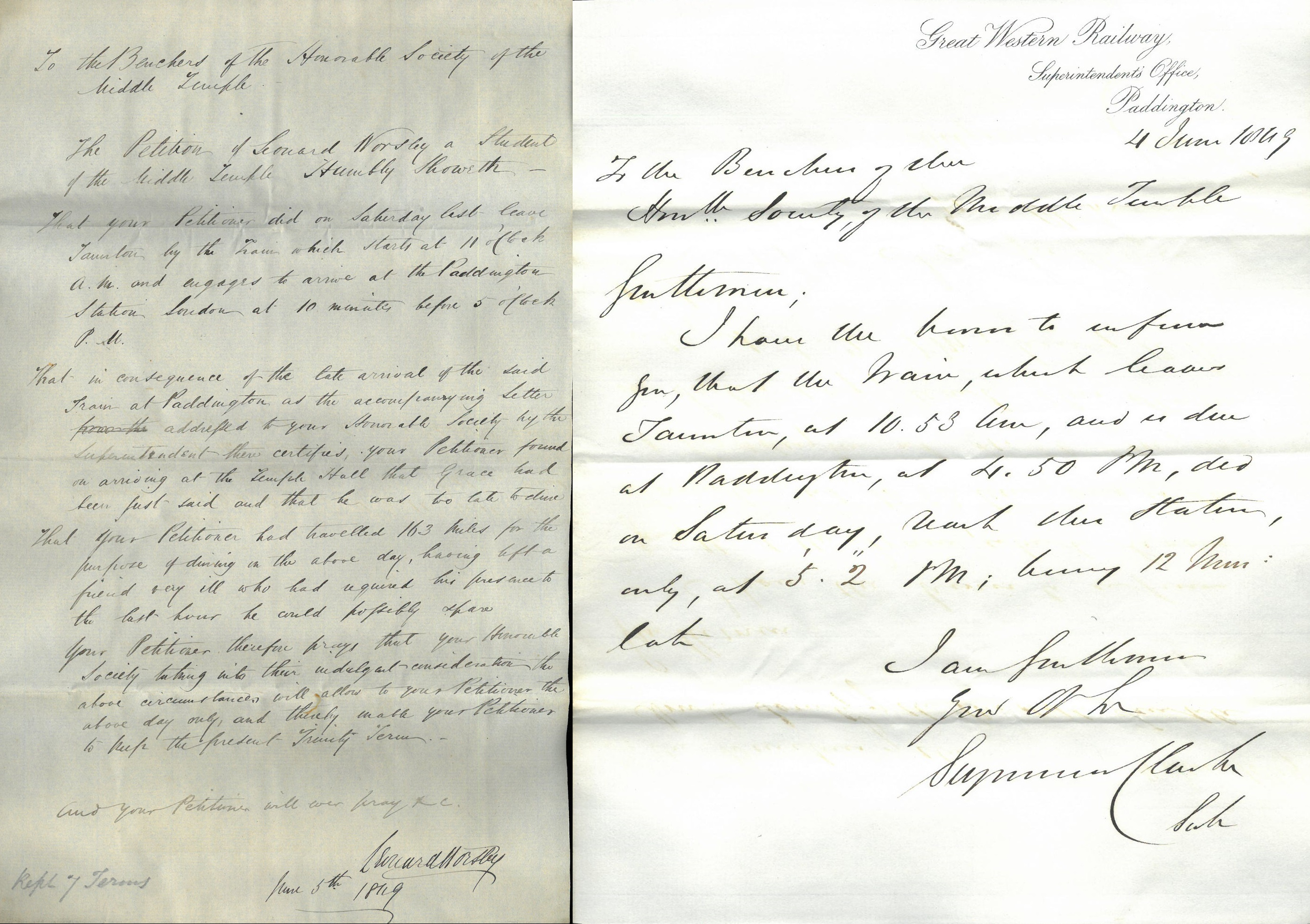
Petition from Leonard Worsley and note from Superintendent, 1849. [Box VI/Bundle V/26]
Alongside the availability of trains, technological advancements saw the use and rise of road transport, such as bicycles, cars, taxis and buses which gradually replaced horse drawn carriages. However, while these were important inventions, Middle Templars could often find themselves at the mercy of vehicles and their drivers, with various incidents occurring from their dangerous operation at the Inn.
One incident in 1894 occurred when barrister member Mr Keith Frith was crossing Fleet Street outside the Inn, and was knocked down by a hansom cab, which he claimed was driving at 12 miles per hour. The driver claimed it was five miles per hour, noting that as he was able to pull up immediately, proved he was going a slow pace, and that Mr Frith had appeared on the road without warning from behind an omnibus. The case was dismissed as pure accident by Alderman Sir Joseph Renals, but he expressed regret that Mr Frith had been hurt.
In December 1899, a story was noted in the Express and Echo newspaper regarding a Mr Harley who was slowly cycling up the Lane with his bell going and his lamp alight. It notes that a Professor Bradshaw ‘walked deliberately into his front wheel’ before proceeding to strike the cyclist with several times with his umbrella. The incident had two witnesses and was taken to court, which found in favour of the cyclist, Mr Harley.
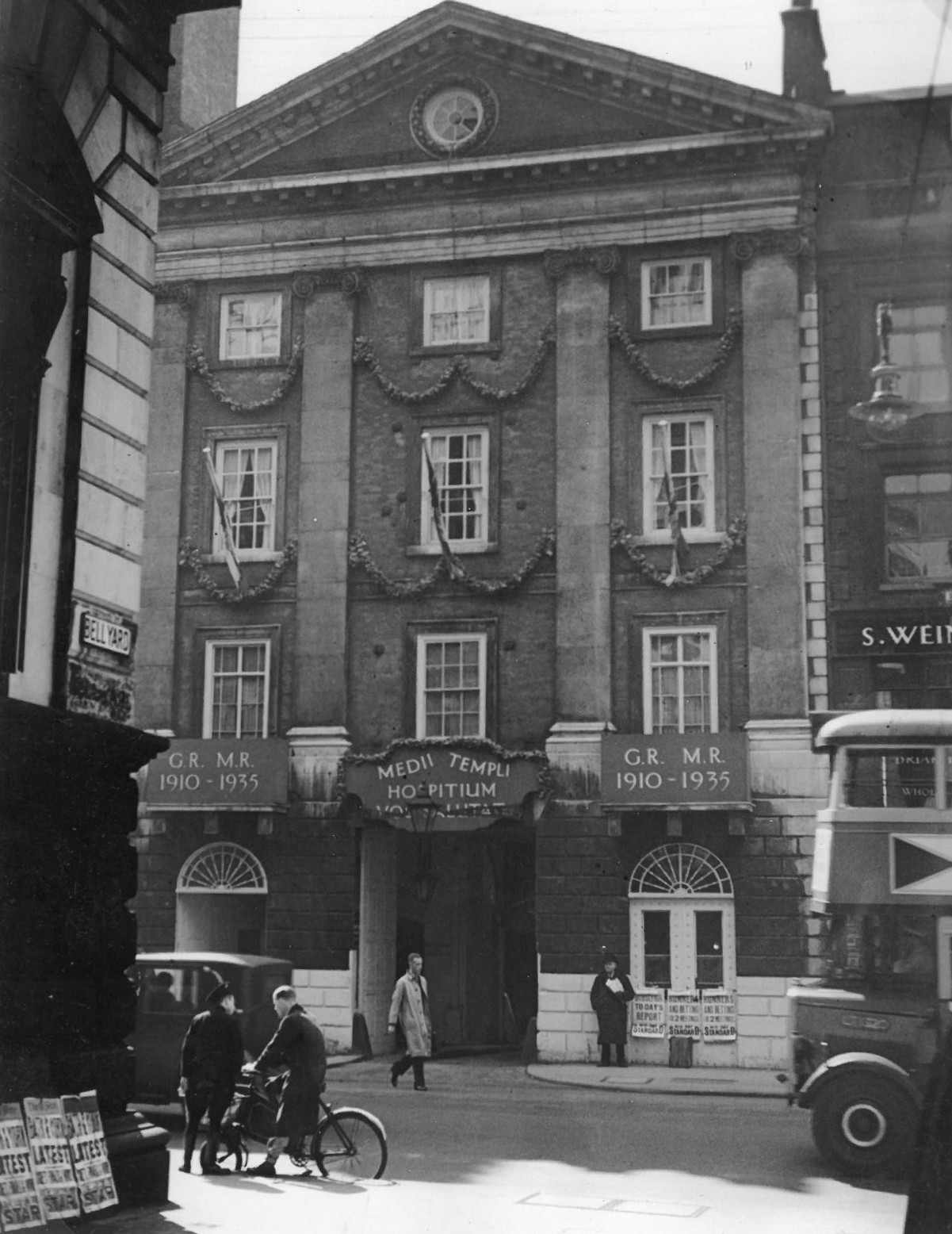
Bus and Bicycle outside of Temple Gate on Fleet Street, 1935. [MT/19/PHO/10/11/1]
Taxis driving down the Lane could also be hazardous. A tenant of the Inn wrote to the House Committee in January 1913 to complain of dangerous driving by these taxis, noting that most of them were using the Lane purely as a shortcut, rather than to drop off or collect passengers. The Committee resolved that a notice stating ‘drive slowly’ should be placed at all the entrances to the Lane.
Danger to people on the Lane came to a head in 1923 when in May, the Treasurer, with concern about danger to both life and limb, ‘gave instructions that no bicycles might be ridden in the Lane.’ Following on from this, it was reported in August of the same year that access to Middle Temple Lane had been closed to the public due to the ‘nuisance caused by drivers of vehicles…using the lane and precincts as a route to the Embankment’.
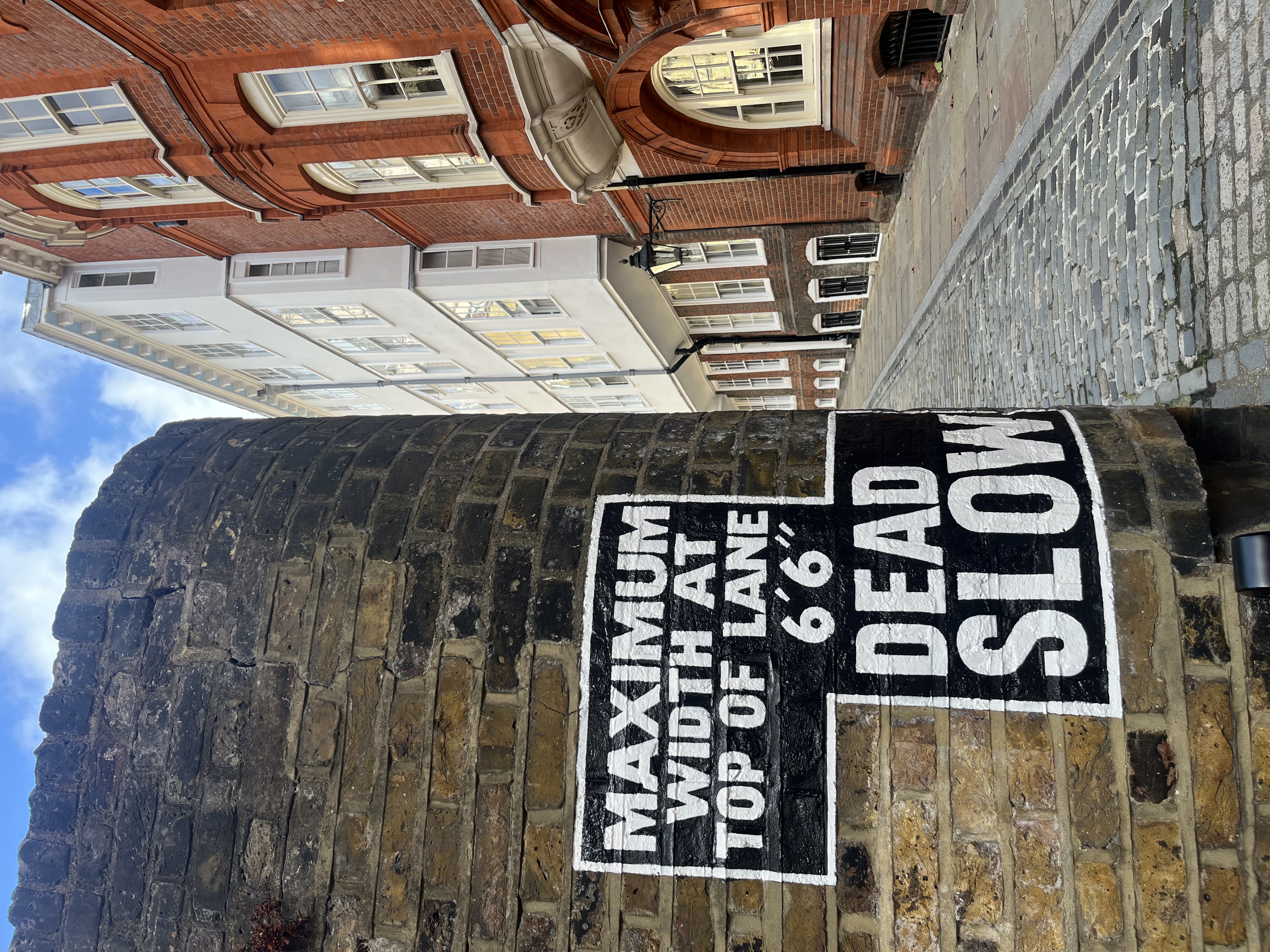
Dead Slow sign on Middle Temple Lane, 2025.
The increased use of cars during the 1900s led to a demand for parking spaces, and the space required to provide ample car parking at the Inn quickly became an issue for the Benchers. In July 1921, Parliament ordered the owners of cars be informed that ‘the Bench disapproves of the precincts of the Middle Temple being used as a garage or yard for motor cars and that the owners be requested to abstain from doing so’. However, it seemed that their order did little to quell the issue of car parking as in November 1924, the Evening News (London) noted that Benchers were once again complaining about the number of cars parked at the Temple. It stated that ‘over 50 can be seen by King’s Bench Walk – one long line of all kinds and makes – Olympic in miniature’.
In a possible attempt to solve the car parking issue, in 1945, a memorandum was put forward to the post-war reconstruction committee regarding building a car park under the garden, a plan which was never realised.
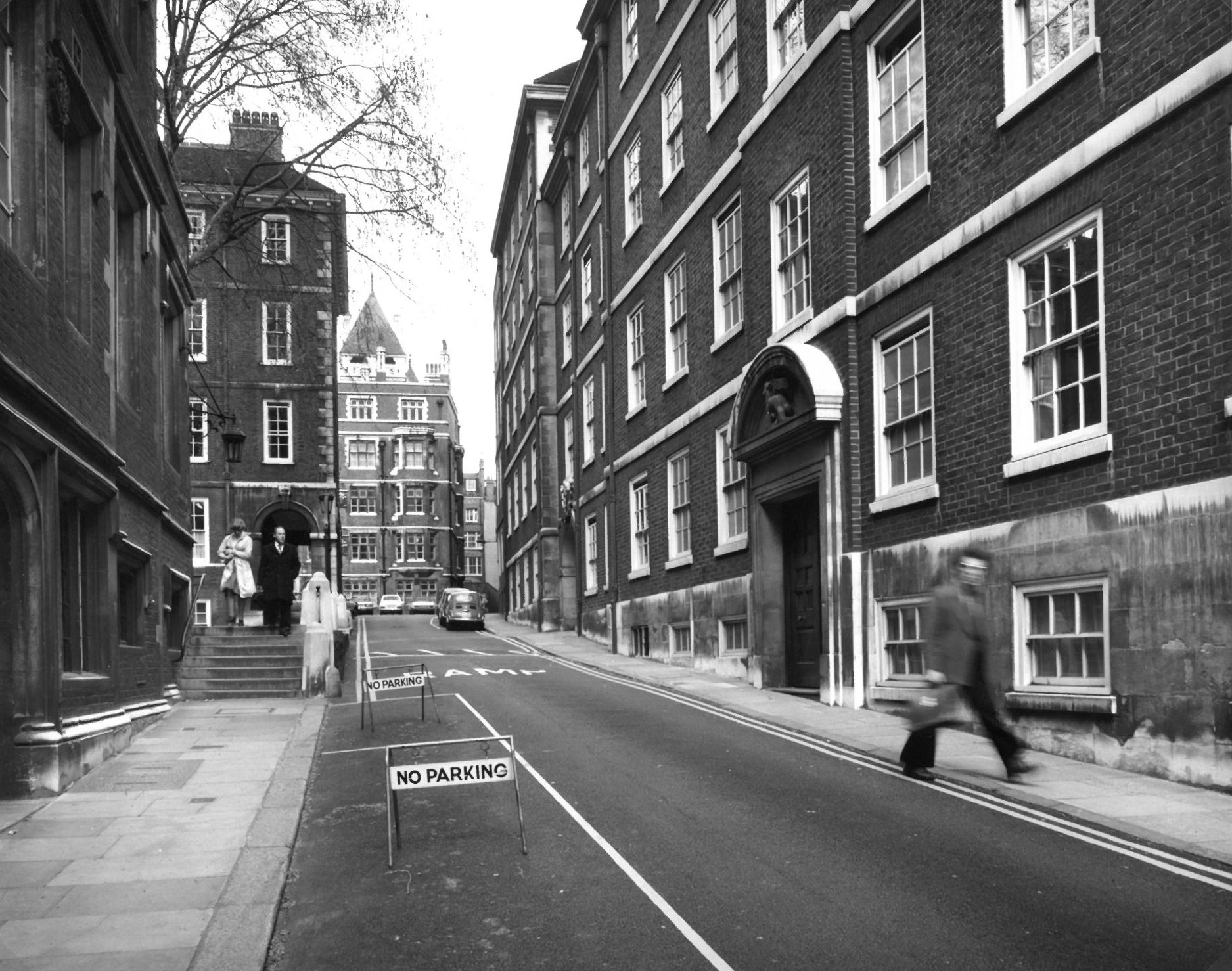
No Parking signs on Middle Temple Lane with cars in the distance, c.1950. [MT/19/PHO/10/11]
It wasn’t just car parking that was required by members of the Inn - an uptake of cycling led to the need for cycling racks at the Temple. In the 1980s, the Inn made note that there had been an increase of bicycles chained to railings and left in entrances and common parts of buildings which had potential to restrict access in the event of an emergency requiring the Fire Brigade or Ambulances. To combat this, Middle Temple and Inner Temple jointly agreed to cover the £365 cost of installing cycle racks behind Crown Office Row; in order to keep costs down, the bike holders were installed by the Inn themselves. Alongside these racks, further bicycle parking was built in the Queen Elizabeth Building car park and these still provide ample space for cyclists today.
Cycle racks in the Queen Elizabeth Building Car Park, c.2018.
Overall, over two centuries and beyond, developments in transportation have had a positive effect on the lives and work of members of the Inn. Transport has enabled Middle Templars to travel long distances, within the country and overseas, has greatly widened the international membership of the Inn, allowed members to travel to new locations and helped to build connections through Amity visits across the globe.